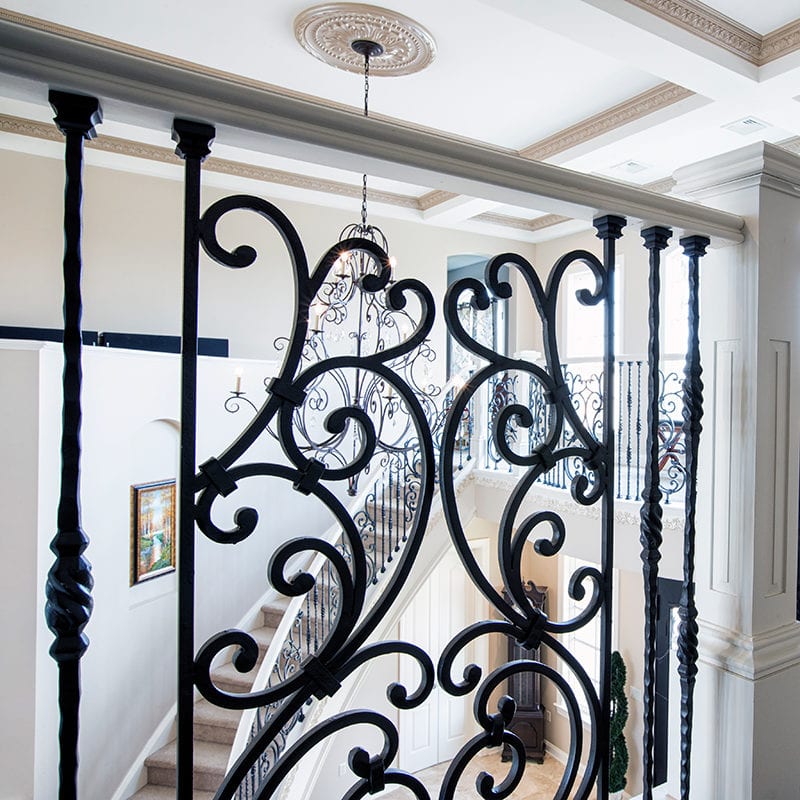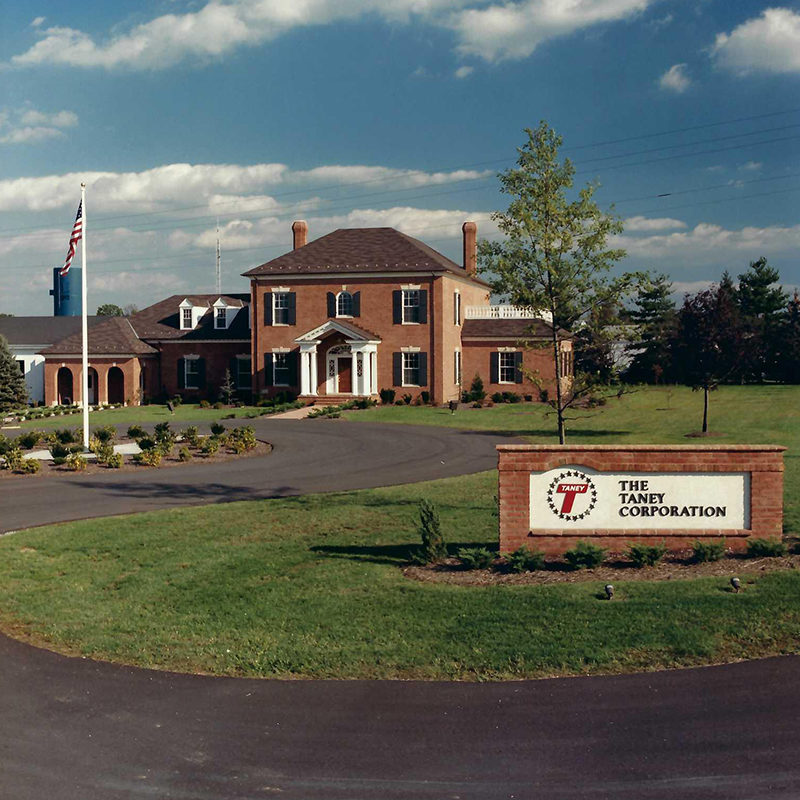Stair Terms
When discussing stair options with your builder or architect, ordering components yourself, or understanding stair plans and quotations, it helps to know the specific terms for the various parts of a stair. Here are some of the most commonly used terms, along with brief descriptions:
- Balcony: an elevated portion of a floor with a balustrade visible from below
- Baluster: one of the vertical members that help support the railing
- Balustrade: the system of rails, balusters, newels, panels, and other decorative elements attached to the steps; balustrades provide both safety and beauty to the stair
- Box Newel: a newel in the form of a square column, usually with a hollow center
- Box Stair: stairs with closed stringers on each side that ‘box’ in the steps
- Bracket: (1) a support used to attach a handrail to a wall; (2) an element connecting the tread and riser, usually applied to the stringer as decoration
- Cap: a moulded object or board used to finish the top of an object, such as a newel post or a housed stringer
- Circular Stair: a curved stairway that is circular in plan, usually with a consistent radius
- Easement Rail: railing where intersections between two pieces of straight railing are made by using a smooth, curving fitting instead of an angular intersection
- Fascia: trim board applied to a vertical surface, often embellished with moulding
- Fitting, Rail: components in railing systems used to provide a continuous rail, as well as make transitions in the rails direction, or simply for ornamentation
- Flared Stair: a stairway in which some part has an arc in plan
- Flight: an uninterrupted series of steps from one landing to another
- Fluting: parallel round-bottom grooves that decorate vertical surfaces of elements such as balusters or newels
- Freestanding Stair: a stair unsupported by walls; instead it’s attached to the floor systems at the top and bottom of the flight
- Gooseneck Rail: see ‘Over the Post’
- Handrail; rail; railing: the smooth piece that provides a hand grip; available in many profiles, the railing adds a great deal to the beauty of the stair
- Horse Cut Stringer: a stringer cut or notched so the tread edge protrudes past the side
- Housed Stringer: a stringer into which the ends of the treads and risers are fitted so they can’t be seen from the side
- Lander: the space at the top and bottom of a flight that gives clear approach to the stair; an intermediate platform between flights used to change direction and/or provide a resting place
- Level Rail: any railing system that is parallel to the floor beneath it
- Newel; newel posts: railing supports at the top, bottom, and direction-change points of the stair that are usually larger and more decorative than balusters; a popular style is the ‘box newel,’ where the newel takes the form of a square column
- Nosing: the finished edge of a tread
- Open Riser Stair (also No Riser Stair): a stair without risers, so the space between treads is open
- Open Stringer, mitered: a cut stringer in which the notches are mitered to fit risers with complementary miters
- Over-the-Post construction: a stair with a continuous railing from top to bottom
- Over-the-Post Railing: a continuous railing system that flows uninterrupted over the tops of the newel posts
- Partial Open Stair: a stair with an open side that becomes closed by a wall part way up the flight
- Pin Top Baluster: a baluster with a round top that is fitted into holes in the bottom of the rail
- Pin Top Newel: an over-the-post newel that has a dowel pin on top to fit into a cap
- Platform: (1) an intermediate stairway landing; (2) the extension of a floor landing often used as the top tread of a spiral stairway
- Plow: a flat-bottomed groove in the length of a rail, board or shoerail
- Post: posts: newels
- Post-to-Post construction: a stair with rails that stop at each newel post
- Post-to-Post Railing: a railing system where the rail stops and is interrupted at each newel post
- Quarter-Turn Step: a starting step with a quarter circle in plan
- Rail Profile: the shape in section of a rail
- Rake: the angle of the stair’s rise
- Rake Rail: a rail at an angle or pitch, typically a rail on a stair
- Reeding: a series of parallel beads used as decorative detail on vertical surfaces of elements like balusters and newels
- Returned Tread: a tread used on open stringer stairs with the nosing “returned” to project over the cut face string at the end of the tread by mitering a matching return nosing to the end of the tread
- Rise: the vertical height between adjacent treads
- Riser: the vertical part of the step
- Rosette: a decorative anchoring wall plate used to attach a rail to a wall
- Rough Cut or Run: the horizontal distance between adjacent risers
- Spiral Stair: a staircase whose steps wind around a central vertical axis or pole
- Stair: stairs; stairway; staircase: a series of steps; the part of the stair you actually climb; often used to describe the entire stair system, including rails, balusters, and newels as well as stairs proper
- Starting Step: the first step you use when going up the stair; it’s often larger and more decorative than the other steps
- Starting Step, Bullnose: a tread with a half-round end in plan that projects beyond the stringer
- Step: the part of the stair that you step on, composed of tread and riser; the unit segment of a stair
- String, stringer, Skirtboard: the long boards that support a stair’s length and to which the treads and risers are attached
- Tread: the horizontal part of the step
- Turn out: a starting rail fitting that ‘turns out’ 90 degrees
- Volute: a horizontal spiral forming a railing’s decorative end
- Volute Step: a type of bullnose starting step with a nosing designed concentric to the plan of the volute through at least 180 degrees
- Wall Rail: a handrail mounted to a wall
Stair Terms Illustration

A T-1640 Starting newel with no fitting
B T-1615-13-60 – Landing newel with no fitting
C T-1600-60 – Landing newel with gooseneck fitting
D T-101 – Bracket
E T-1605-50 – Volute newel
F T-4015 – Bullnose starting step
G T-1605-50 – Turnout newel
H T-2530 – Lefthand volute
I T-2545 – Righthand turnout
J T-1642 – Landing half-newel
K T-2509 – Opening cap
L T-1600-48 – Starting newel
M T-1600-48 – Starting newel
N T-1600-60 – Landing newel
O T-2510 – Starting easing with cap
P T-2565 – Righthand gooseneck with upeasing and cap
Q T-104 – Bracket
R T-1641BT – Second floor newel
S T-1600-60 – Second floor newel
T T-2599 – Gooseneck
U T-2586 – Righthand gooseneck with cap
V T-3080 – Landing tread
W T-2520 – Tandem cap
X T-1600 – Second floor newel
Y T-2521 – Quarterturn cap
Z T-1600-60 – Landing newel
B T-1615-13-60 – Landing newel with no fitting
C T-1600-60 – Landing newel with gooseneck fitting
D T-101 – Bracket
E T-1605-50 – Volute newel
F T-4015 – Bullnose starting step
G T-1605-50 – Turnout newel
H T-2530 – Lefthand volute
I T-2545 – Righthand turnout
J T-1642 – Landing half-newel
K T-2509 – Opening cap
L T-1600-48 – Starting newel
M T-1600-48 – Starting newel
N T-1600-60 – Landing newel
O T-2510 – Starting easing with cap
P T-2565 – Righthand gooseneck with upeasing and cap
Q T-104 – Bracket
R T-1641BT – Second floor newel
S T-1600-60 – Second floor newel
T T-2599 – Gooseneck
U T-2586 – Righthand gooseneck with cap
V T-3080 – Landing tread
W T-2520 – Tandem cap
X T-1600 – Second floor newel
Y T-2521 – Quarterturn cap
Z T-1600-60 – Landing newel
AA T-202 – Rosette
BB T-203 – Rosette
CC T-1600-60 – Landing newel
DD T-2521 – Quarterturn cap
EE T-2511 – Level quarterturn
FF T-1643BT – Landing newel
GG T-2516 – Overeasing returned end
HH T-112 Wall rail bracket
II T-2515 – Starting easing returned end
JJ T-1515 – Pin-top balusters
KK T-1560 – Square-top balusters
LL T-2500 – Handrail
BB T-203 – Rosette
CC T-1600-60 – Landing newel
DD T-2521 – Quarterturn cap
EE T-2511 – Level quarterturn
FF T-1643BT – Landing newel
GG T-2516 – Overeasing returned end
HH T-112 Wall rail bracket
II T-2515 – Starting easing returned end
JJ T-1515 – Pin-top balusters
KK T-1560 – Square-top balusters
LL T-2500 – Handrail






















